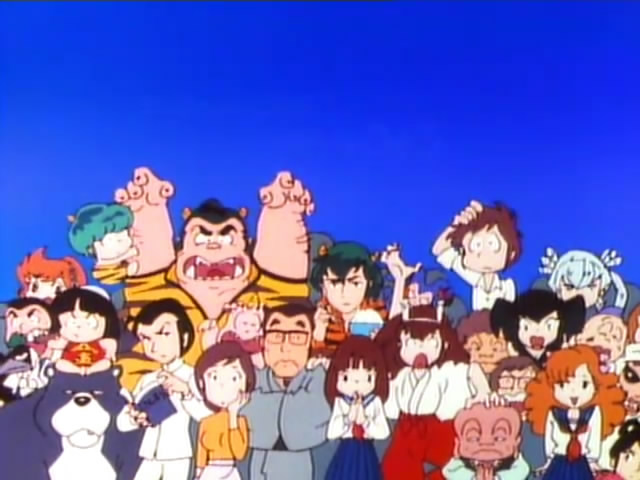
So what better way to follow 10 Lupin films than to watch all of Urusei Yatsura?!?
Well that’s what I’m going to try and do next year. If I keep up a rate of one episode a day, I should be done by July 14th. Do I do the OAVs & Films? Well that probably depends on how much I like the Kazuo Yamazaki episodes as I’ve currently only seen Mamoru Oshii parts of the series. I’ll probably do Only You and Beautiful Dreamer at the very least, as I have them. And they are great.
So why do this, beyond the fact I’ve only ever watched the first 100 episodes? Well, this is the show that dragged me into the mire that is anime fandom back in 1995. I’d started buying Manga Mania to read Akira (before then I’d read my little brother’s copies), and it had convinced me to buy the first two volumes of Tenchi Muyo (that Pioneer had just released in the UK) and then to buy the first volume of Urusei Yatsura (Anime Projects’ release of AnimEigo’s translation). This was my introduction to subtitled anime, and combined with the detailed AnimEigo sleeve notes, I was already doomed. You know that line in LCD Soundsystem’s “Losing My Edge”? “Borrowed nostalgia for the unremembered eighties.” Well that’s a little like how UY is for me, between both the actual anime and those great sleeve notes, I’ve nostalgia for an early 80s surburban Japan I could never have experienced (I would have been 6 when the first episode aired in October 1981, and 10 when in finished in March 1986).
So what is Urusei Yatsura?
Simply put it’s the story of the unlucky, lecherous teenager Ataru Moroboshi who finds himself betrothed to the alien princess, Lum. This leads to him, his school, neighbourhood and family to encounter an never ending array of bizarre aliens and supernatural occurances.
It’s more than that though, if that was all it took to make a good anime then the vast horde of its imitators wouldn’t be so thoroughly dreadful.
What Urusei Yatsura had was talent. Based on Rumiko Takahashi’s hit debut manga, this was Mamoru Oshii’s breakthrough show, and in his role of Chief Director his fingerprints are all over it. It’s not 100% faithful, from an interview with Oshii in AniFantastique, Takahashi did not always see eye to eye with Oshii on the adaptation (I think he mentions this on the Beautiful Dreamer commentary too). Oshii trys to play down the fantastic and sci-fi elements and plays up the “mudane” elements, specifically the people and the places in Tomobiki, a fictional district of the suburban Nerima ward (see Nerima Daikon Brothers for more suburban fun). However there’s obviously some pull for the fantastic coming from Takahashi, and this tension arguably goes some way to making it all the better. And of course it helps that Oshii had a talented crew full of people, many of whom would go onto other notable projects (some with Oshii, some without).